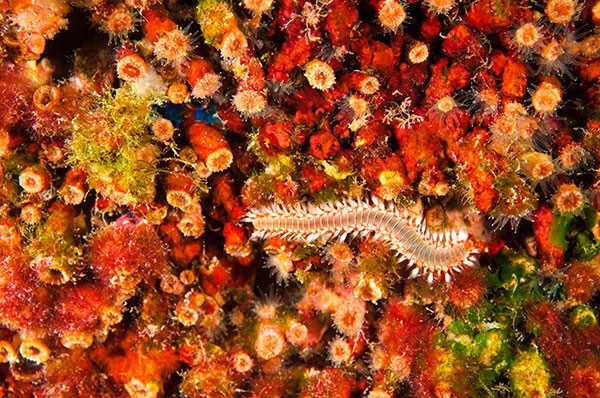Hello Nature readers, would you like to get this Briefing in your inbox free every day? Sign up here.

Coral reefs are feeling the effects of warming seas. Images & Stories/Alamy
Some corals can revive after bleaching
One type of coral reef can unexpectedly recover after a bleaching event that makes it appear dead. Over 16 years of observations, researchers realized that a small number of the polyps of endangered Cladocora caespitosa corals were not killed by a 2006 heatwave in the Mediterranean during that time, but went into a kind of hibernation. Evidence of such coral rejuvenation had only been seen in fossil corals before. The finding is hopeful for corals fighting their way back from isolated warming events. But this hibernation behaviour won’t be enough to protect ecosystems such as the Great Barrier Reef, which will need to survive ever-hotter seas brought on by climate change.
Reference: ScienceAdvances paper
The first drug designed for a single patient
Milasen is a new drug for just one person: an 8-year-old girl named Mila. She has a rare genetic neurodegenerative condition called Batten’s disease. Doctors used an antisense oligonucleotide (ASO), a sequence of 20 nucleotides designed to alter how the body makes certain proteins. In the space of a year, the ASO was customized to target the specific mutation Mila carries in her DNA. The drug seems to have eased Mila’s symptoms, but it raises questions about who can access such treatments. Mila’s mother raised US$3 million for research into her daughter’s condition.
The New York Times | 5 min read
Read more: Nature Medicine explores the regulatory maze posed by personalized ASOs, featuring Mila’s story. (from June)
Reference: New England Journal of Medicine paper
Is this the big one?
A new method might be able to predict whether an earthquake will be followed by smaller aftershocks — or whether worse is to come. Researchers found that they could statistically predict whether a series of shocks represents a decaying sequence of aftershocks, or foreshocks to an upcoming large event — maybe even in real time. But there are lots of caveats: researchers looked at only two series of quakes (in Italy and Japan), it’s not certain that the observed pattern is deterministic rather than statistical, and it’s hard to actually measure a quake series as it happens.
Go deeper with the expert analysis in the Nature News & Views article.
FEATURES & OPINION
Banish hunger on university campuses
Agricultural researcher Esther Ngumbi knows first-hand how it feels to go hungry at university, and how it affects your ability to learn. The experience even inspired her to found a primary school in Kenya that feeds, as well as educates, more than 100 students. She outlines practical advice for educational institutions to address food insecurity on their campuses.
Ten statistical mistakes to watch out for
Neuroscientists Tamar Makin and Jean-Jacques Orban de Xivry outline ten of the statistical mistakes they spot most often in papers, and offer advice for authors, reviewers and readers on how to spot them. They also give readers (with ORCID accounts) the option to chime in on the best way to avoid these mistakes, using eLIFE’s live annotation feature.
INFOGRAPHIC OF THE WEEK

A simulation of stellar mergers sheds light on how two massive stars combine to create a new star with a strong magnetic field. In this image, the first row shows how the material mixes and the second row reveals how the magnetic field develops over time. Reference: Nature paper
